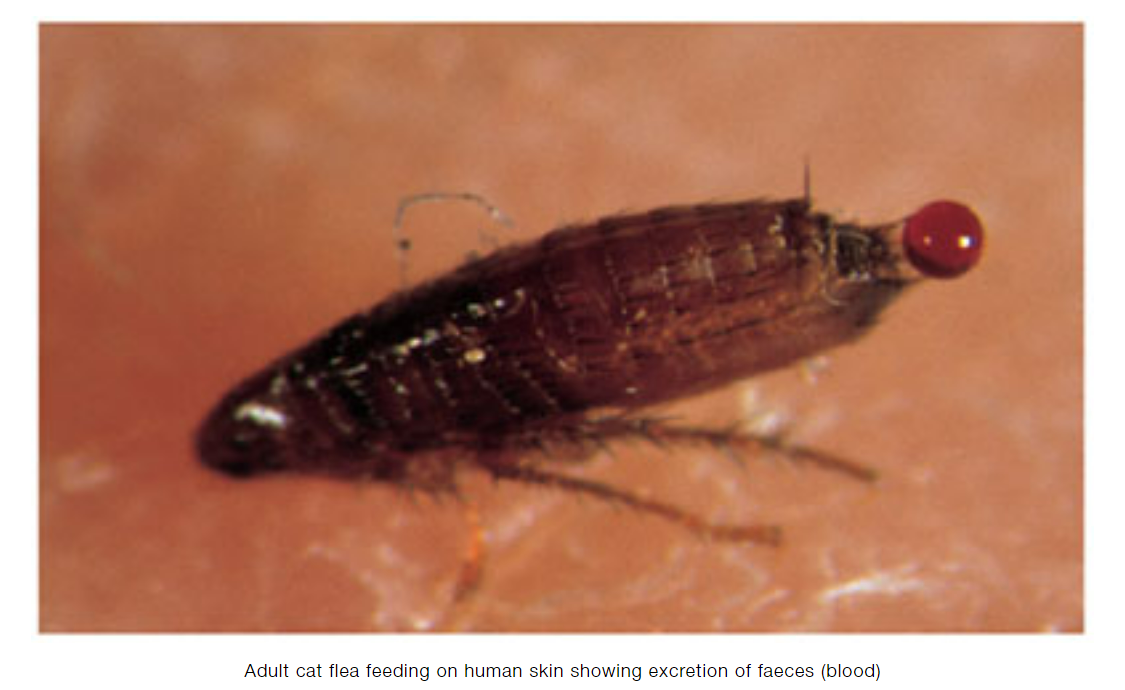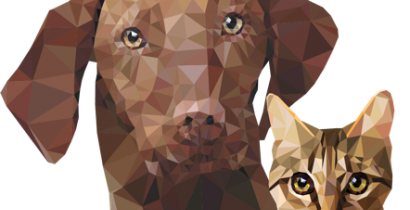FEEDING
For blood intake, the suctorial mouth parts, well adapted to piercing and sucking from the skin, are used by the fleas. The host’s epidermis is penetrated by the flea’s maxillae. A tube, the epipharynx, enters the capillary vessels and draws up blood while saliva from the maxillae is deposited in the surrounding tissue (Lavoipierre and Hamachi, 1961).

Minimal damage to the skin is caused (Lavoipierre and Hamachi, 1961). The saliva of the cat flea contains a substance that may soften and spread dermal tissue, assisting in the penetration of the dermis by the proboscis (Feingold and Benjamini, 1961). It further contains an anticoagulant, helping in the uptake of blood (Deoras and Prasad, 1967).
The flea requires a period of between two and ten minutes to engorge (Rothschild, 1975). The amount of blood consumed by a female cat flea is an average of 13.6μl (+/-2.7μl) per day, which is equivalent to 15.15-times the body weight (Dryden and Gaafar, 1991). Female fleas increase their body weight by 40% during a one hour stay on a host while male fleas only show an addition of 3%. Within 48 hours the fleas reach their maximum weight. In females an addition of 140% (here 1.08 mg), respectively in males of 19% (here 0.43 mg), could be recorded (Schelhaas and Larson, 1989).
Unpublished laboratory observations by Pospischil (2001, personal communication) stated the maximum time of feeding of Ctenocephalides felis to be 5-10 minutes and of Archaeopsylla erinacei, the hedgehog flea, 20 minutes.
References
Deoras PJ, Prasad RS: Feeding mechanisms of Indian fleas X. cheopsis (Roths) and X. astia (Roths). Ind J Med Res. 1967, 55, 1041-50
Dryden MW, Gaafar SM: Blood consumption by the cat flea, Ctenocephalides felis (Siphonaptera: Pulicidae). J Med Entomol. 1991, 28, 394-400
Feingold BF, Benjamini E: Allergy to flea bites: clinical and experimental observations. Ann Allerg. 1961, 19, 1275-89
Lavoipierre MMJ, Hamachi M: An apparatus for the observations on the feeding mechanism of the flea. Nature. 1961, 192, 998-9
Schelhaas DP, Larson OR: Cold hardiness and winter survival in the bird flea, Ceratophyllus idius. J Insect Physiol. 1989, 35, 149-53
EXPLORE OUR CONTENT
 CVBD MapsThe CVBD Occurence World Map presents country-specific situations based on current scientific knowledge and feed-back from experts around the world in an easy-to-grasped way. |
| Read more-> |
 ResourcesElanco Animal Health supports education in parasitology and especially in the field of vector-borne diseases. Access image collections, discover the World Forum calendar, interesting links and our glossary. |
| Read more-> |
 CVBD World ForumThe CVBD World Forum is a working group of leading international experts with the mission to enhance knowledge and communication on companion animal vector-borne diseases for the improvement of animal, human, and environmental health. |
| Read more-> |
